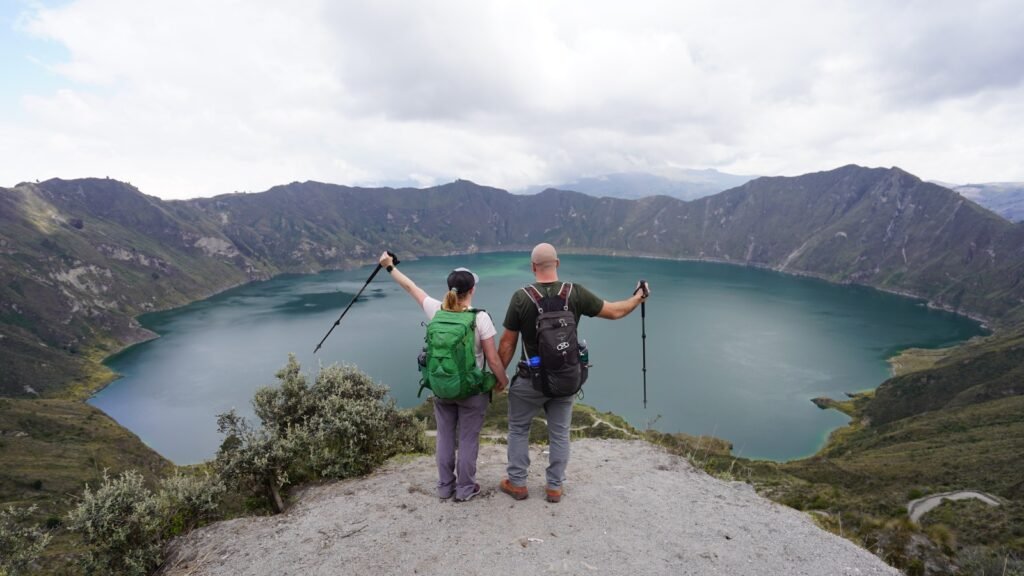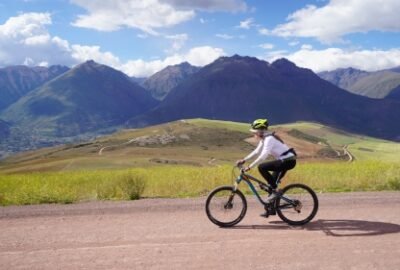
Welcome to our blog about trekking Ecuador volcanoes expeditions! In this blog, we aim to provide you with comprehensive information and insights into the thrilling world of trekking and exploring the stunning volcanoes of Ecuador. From the towering peaks of Chimborazo to the majestic Cotopaxi, Ecuador offers a unique and awe-inspiring experience for adventurous trekkers. Join us as we delve into the details of these expeditions, share personal stories, and provide tips to help you make the most of your journey.
Tips and Recommendations:
- Research and choose a reputable tour operator or guide for your trekking expedition.
- Acclimatize properly before attempting high-altitude treks to minimize the risk of altitude sickness.
- Pack appropriate gear, including warm clothing, sturdy hiking boots, and essential camping equipment.
- Stay hydrated and carry enough water during your trek to combat the effects of high altitude.
- Train physically by engaging in cardiovascular exercises and hiking to prepare your body for the demands of trekking at high altitudes.
- Respect the environment and follow the principles of Leave No Trace to preserve the natural beauty of the volcanoes.
Section 1: Exploring the Volcanic Landscape:
In this section, we will take you on a virtual journey through Ecuador’s volcanic landscape. We’ll provide detailed descriptions of the most iconic volcanoes, including Cotopaxi, Chimborazo, Tungurahua, and more. Learn about their geological history, unique features, and the challenges they pose to trekkers. Get ready to be mesmerized by the breathtaking scenery and learn about the fascinating volcanic activity that has shaped Ecuador’s landscape.
Cotopaxi Volcano
Trekking on the slopes of Cotopaxi Volcano is an extraordinary adventure that combines stunning natural beauty with a fascinating geological history. This stratovolcano, located in the Andes of Ecuador, is known for its perfect cone shape and its status as one of the world’s highest active volcanoes.
Cotopaxi’s geological story begins with its formation millions of years ago, as the result of subduction, where the Nazca Plate slides beneath the South American Plate. The volcanic activity in the region has contributed to the creation of the Andes mountain range, with Cotopaxi being a prominent feature.
During your trek, you’ll witness the remnants of past eruptions in the form of ancient lava flows and ash layers that have shaped the landscape. The volcano’s composition consists of alternating layers of lava, ash, and pyroclastic materials, providing a glimpse into the volcanic processes that have occurred over time.
As you hike higher, you’ll notice the gradual change in vegetation, transitioning from lush forests to alpine meadows and eventually barren rocky slopes. Cotopaxi’s icy glaciers, such as the impressive Glacier de Cotopaxi, are a testament to the volcano’s glacial activity, which has sculpted the surrounding landscape.
While trekking, it’s important to be mindful of Cotopaxi’s active nature. The volcano has experienced multiple eruptions throughout history, with the most recent eruption occurring in 2015. This ongoing volcanic activity adds an element of excitement and wonder to your trek, as you witness the power of nature up close.
Tungurahua Volcano
Trekking on Tungurahua Volcano offers a unique opportunity to explore the geological wonders created by this active stratovolcano. Located in the Ecuadorian Andes, Tungurahua’s name translates to “Throat of Fire” in the local indigenous language, reflecting its fiery nature and fascinating history.
Tungurahua’s geological formation is the result of the same subduction process that formed the Andes. The volcano is characterized by its steep slopes, rocky outcrops, and a prominent crater at its summit. Throughout its history, Tungurahua has experienced frequent eruptions, with notable activity occurring in recent decades.
The trek to Tungurahua takes you through diverse landscapes that showcase the volcano’s geological diversity. As you ascend, you’ll traverse lush valleys, where volcanic ash and debris have enriched the soil, supporting a vibrant ecosystem of plants and wildlife.
The volcano’s eruptive history is evidenced by the presence of lava flows and pyroclastic deposits along the trekking route. You may encounter volcanic rocks and formations that have been shaped by explosive eruptions and subsequent erosion, providing a glimpse into Tungurahua’s dynamic geological past.
Trekking on Tungurahua is an opportunity to witness the volcano’s active nature firsthand. While the volcano has been relatively calm in recent years, volcanic fumaroles and occasional rumblings serve as reminders of its potential for eruption, adding an element of excitement and adventure to your journey.
Chimborazo Volcano
Embarking on a trekking expedition to Chimborazo Volcano unveils a geological marvel that stands as a testament to the Earth’s ancient tectonic forces. Located in the Andes of Ecuador, Chimborazo is not only the country’s tallest peak but also the highest point on the Earth’s equatorial bulge.
Chimborazo’s geological origins lie in the subduction zone, where the Nazca Plate collides with the South American Plate. The gradual movement and collision of these plates have uplifted the Andes mountain range, resulting in the majestic peaks of Chimborazo.
As you embark on your trek, you’ll traverse a diverse range of geological formations. The lower slopes of Chimborazo are characterized by verdant valleys and grazing lands, showcasing the volcanic ash and fertile soils that have been deposited over time.
As you ascend higher, the landscape transitions to rocky terrain, with steep slopes and glacial features. The summit of Chimborazo is home to a massive ice cap, composed of glaciers that have sculpted the mountain over centuries. These glaciers are remnants of past volcanic activity and are crucial indicators of the mountain’s geological processes.
Trekking on Chimborazo offers a unique opportunity to witness the effects of glaciation and erosion on the volcanic landscape. You may encounter glacial moraines, erratic boulders, and U-shaped valleys, all of which are evidence of the powerful forces that have shaped the mountain.
While Chimborazo is currently considered dormant, its geological history is marked by several eruptions. The volcano’s asymmetrical shape and the remnants of past volcanic activity make it a captivating destination for trekking enthusiasts and geology enthusiasts alike.
Tips and Recommendations:
- Check the latest volcanic activity reports and consult local authorities before embarking on your trek to ensure safety.
- Be prepared for varying weather conditions, as mountain weather can be unpredictable. Carry layers of clothing to adjust accordingly.
- Take breaks during your trek to appreciate the stunning views and give your body time to adjust to the altitude.
- Hire a knowledgeable guide who can provide insights into the geological and cultural significance of the volcanoes.
- Capture your memories with a good quality camera and share your experiences on social media to inspire others.
Section 2: Trekking Routes and Itineraries:
In this section, we will explore different trekking routes and itineraries for Ecuador’s volcanoes. Whether you are a seasoned trekker looking for a challenging multi-day expedition or a beginner seeking a shorter trek, we have you covered. We’ll provide detailed information on popular routes, such as the Quilotoa Loop, the Avenue of the Volcanoes, and the Cotopaxi National Park circuit. Discover the unique landscapes, diverse flora and fauna, and cultural highlights along each route.
The Avenue of Volcanoes in Ecuador is a popular trekking destination that offers a unique and unforgettable experience. This trekking adventure takes you through stunning volcanic landscapes, diverse ecosystems, and charming Andean villages. The itinerary ideas include a classic trek that explores the Cotopaxi, Tungurahua, and Chimborazo volcanoes, as well as a loop trek that incorporates the Quilotoa Crater Lake. Along the way, trekkers can witness the geological wonders of active and dormant volcanoes, hike through picturesque valleys, and immerse themselves in the rich cultural heritage of the region. Whether you choose the classic trek or the loop trek, the Avenue of Volcanoes guarantees breathtaking views, challenging terrain, and a truly memorable journey.
Tips and Recommendations:
- Plan your itinerary in advance, considering factors such as the length of the trek, difficulty level, and available accommodations.
- Prioritize safety by choosing well-marked trails and avoiding areas with high volcanic activity.
- Carry a map, compass, and GPS device to navigate the trails effectively.
- Pack lightweight and nutritious snacks to fuel your energy during the trek.
- Engage with local communities along the trekking routes to learn about their customs and traditions.
Section 3: Preparation and Safety:
In this section, we will provide you with essential tips and recommendations to ensure a safe and successful trekking experience. Learn about the necessary equipment, physical preparation, and safety precautions required for trekking Ecuador’s volcanoes. We’ll cover topics such as altitude acclimatization, first aid, emergency protocols, and the importance of hiring experienced guides.
Tips and Recommendations:
- Consult with your doctor before attempting high-altitude treks, especially if you have any pre-existing medical conditions.
- Invest in high-quality trekking gear, including a sturdy backpack, waterproof clothing, and a reliable sleeping bag.
- Carry a comprehensive first aid kit that includes altitude sickness medication, blister care, and basic medical supplies.
- Familiarize yourself with the signs and symptoms of altitude sickness and know when to descend or seek medical assistance.
- Follow the guidance of your guide or tour operator regarding safety protocols and emergency procedures.
Conclusion:
As we conclude this blog about trekking Ecuador volcanoes expeditions, we hope you feel inspired to embark on your own adventure to explore these remarkable natural wonders. Remember to plan well, prioritize safety, and embrace the challenges and rewards that await you. Ecuador’s volcanoes offer a unique opportunity to connect with nature, push your limits, and create lifelong memories. So lace up your hiking boots, pack your backpack, and get ready for an unforgettable journey through the land of volcanoes!
Tips and Recommendations:
- Respect the local culture and customs of the communities you encounter during your trek.
- Leave the trails and campsites as you found them, practicing responsible tourism.
- Capture the beauty of the volcanoes through photography, but remember to be present and experience the moment without being overly focused on capturing the perfect shot.
- Share your experiences and photographs responsibly on social media, promoting sustainable and respectful tourism practices.
- Reflect upon your journey and consider the impact it has had on you, both physically and mentally.
Remember, trekking Ecuador’s volcanoes is an adventure that requires careful planning, physical preparation, and a deep respect for nature. With the right mindset, gear, and guidance, you can embark on an incredible journey that will leave you with lasting memories and a profound appreciation for the natural wonders of Ecuador. So, get ready to conquer the volcanoes, immerse yourself in their beauty, and embark on the adventure of a lifetime!
Activexpedition



